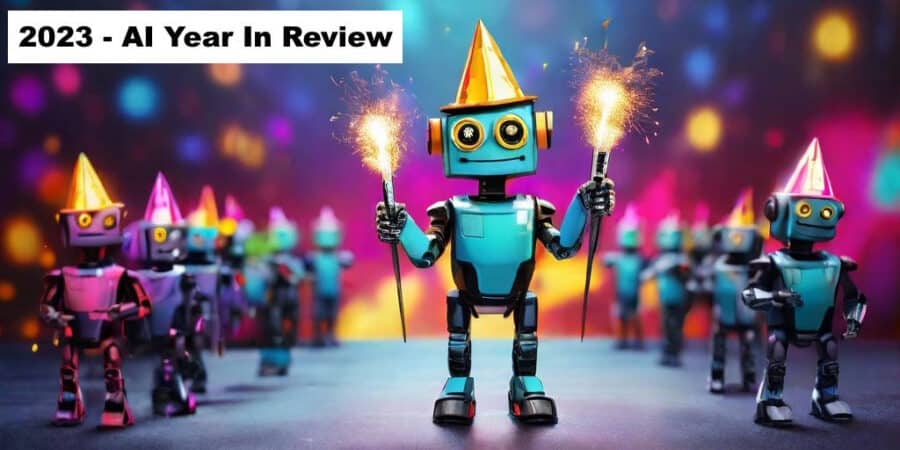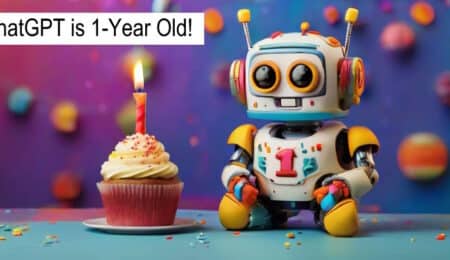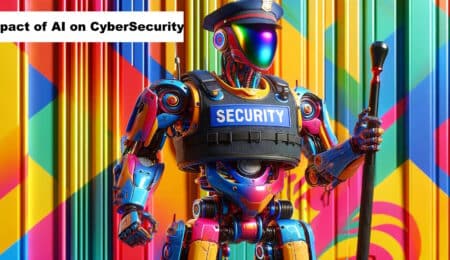As 2023 draws to a close, it’s clear that the field of artificial intelligence has not just grown; it has skyrocketed. This year, we witnessed a series of groundbreaking developments that not only reshaped the AI landscape but also set new standards for technological innovation.
One of the most significant moments was Microsoft’s strategic $10 billion investment in OpenAI. This move not only bolstered Microsoft’s AI capabilities but also positioned it as a frontrunner in the race for AI supremacy. This investment was quickly followed by the revelation that Microsoft had quietly integrated the powerful GPT-4 model into Bing Chat, a move that skyrocketed Bing’s user base and redefined the potential of AI chatbots.
The official launch of GPT-4 by OpenAI marked another pivotal moment in 2023. With its multimodal abilities, handling both text and image inputs, and substantial improvements in intelligence, GPT-4 raised the bar for language models. Its performance on various academic benchmarks underscored its advanced capabilities, demonstrating AI’s potential in complex problem-solving and analysis.
AI’s reach into image generation took a significant leap with MidJourney’s V5, known for its photorealistic images and advanced user prompt understanding. Adobe’s entry into the AI race with Firefly, and its subsequent integration into Photoshop, highlighted the growing trend of incorporating AI into existing software ecosystems, enhancing creativity and efficiency.
The AI landscape was further enriched with innovations in text-to-video technology, notably Runway’s Gen-2 model, which showcased an unprecedented ability to create new video scenes from textual prompts. The AI chatbot scene saw a major enhancement with Anthropic’s rollout of Claude 2, boasting an impressive context window that set new standards in information processing.
Another highlight of the year was the addition of voice and image capabilities to ChatGPT, opening up new possibilities in human-AI interaction. The launch of DALL-E 3, with its highly detailed adherence to user prompts, demonstrated OpenAI’s commitment to creating user-friendly and highly accurate AI tools.
In summary, 2023 has been a watershed year for AI, marked by significant investments, technological breakthroughs, and integrations that have broadened the scope and accessibility of AI tools.
Summary of the Big Events:
- Microsoft’s $10 billion investment in OpenAI.
- Introduction of GPT-4 with multimodal capabilities.
- MidJourney’s V5 and Adobe Firefly advancing AI image generation.
- Developments in text-to-video technology with Runway’s Gen-2.
- Enhancements in AI chatbots, including Claude 2 and ChatGPT.
- Launch of DALL-E 3 and its integration into ChatGPT.
And finally, here are some other AI Honorable Mention Events:
- ElevenLabs announced its new text-to-speech platform in January, changing the game with ultra-realistic AI voices.
- The launch of ControlNet in February revolutionized how we use AI image generators.
- February also saw the (botched) launch of Google’s Bard chatbot.
- AutoGPT’s release in March set off the race to build autonomous AI agents.
- Geoffrey Hinton (aka the “Godfather of AI”) left Google in May to raise the alarm about AI’s scary advancements.
- Google’s I/O conference saw major AI integrations across Google products in May.
- OpenAI’s drop of Code Interpreter in July seriously leveled up ChatGPT’s calculation, data analysis, and data visualization skills.
- OpenAI’s November DevDay didn’t disappoint with the launch of GPTs (i.e. custom AI assistants).
- Lest we ever forget Sam Altman’s firing (and rehiring), the saga that had the AI world holding its breath for a week in November.
- Elon Musk’s startup xAI entered the chatbot race with the launch of Grok in November.
- Google finally debuted its own AI model, Gemini, in December—but may or may not have faked some of its capabilities in demos.




